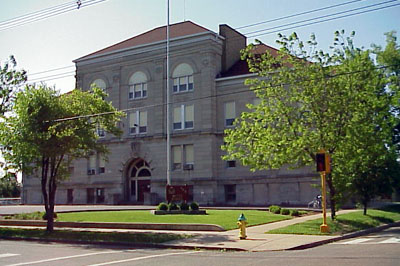
Another plan I will pursue this year is one we may call the “Peoria Promise.†It is based on a similar successful program in Kalamazoo, Michigan. The premise is this: Any student graduating from Peoria’s Public Schools will be eligible for a scholarship to any Public University or College in Illinois. Maybe it will give those graduating in the top 10% of their class a chance to attend Bradley. How does it work? The scholarships would be available to anyone who has been in the Public Schools at least four years at the time of graduation. The amounts are dispensed on a sliding scale, with those who have been enrolled since kindergarten eligible for one hundred percent of their tuition costs. How will it be funded? Through anonymous donors…like in Kalamazoo. What will be the impact? I believe that you will see colleges and universities competing for our students. And, I also believe that you will see the program result in more businesses, jobs and homebuyers being attracted to our area, creating the need for more schools and good teachers. Is this pie-in-the-sky? Am I being unrealistic? Can Peoria do this? Can we duplicate Kalamazoo’s success, where the benefactors underwriting the scholarships have promised funding for at least the next 13 graduating classes? Can we make this happen — right here in Peoria? You tell me. I believe we can and I invite anybody in this room with an interest to contact me.
–Jim Ardis, State of the City Address, 25 January 2006
With that, Mayor Ardis laid down the gauntlet to bring “The Kalamazoo Promise” to Peoria. I decided to familiarize myself with Kalamazoo’s program a little bit so I could better understand how it might play in Peoria.
The Kalamazoo Promise was first announced just two months ago, on November 10, 2005. It caused quite a stir in Michigan and, later, nationwide. Grand Rapids’ WOOD-TV channel 8 has a good archive of stories on this topic, and provide this concise explanation of the program:
Eligibility for this program is based on how long the student attends Kalamazoo public schools.
To receive any assistance, a student must live in the Kalamazoo Public School District and would have had to attend since at least ninth grade. Sixty-five percent of that student’s tuition would be paid.
The scale goes up from there, with eighth graders receiving 70 percent of their tuition paid, 75 percent for seventh graders, 80 percent for sixth, 85 percent for fifth, 90 percent for fourth, and 95 for first through third graders. Students attending schools in the district from kindergarten through high school graduation will have 100 percent of their tuition and fees paid.
It’s easy to see the advantages of such a program. Like Ardis said, it rewards starting and staying in the school district — the longer you stay, the more you benefit. That gives a strong incentive for parents to put their children in public schools, and a larger student population also means more state and federal funding. It’s conceivably strong enough to motivate parents to move into the school district, which would help housing sales and population density, and that means higher property tax revenues, which means more money for the school district.
In fact, that’s just what has been happening in Kalamazoo in just the last two months. “Kalamazoo Public School Superintendent Dr. Janice Brown says more than 200 students have enrolled since The Kalamazoo Promise was announced in November,” according to a report on WOOD-TV today. WZZM-TV 13 (Grand Rapids) reports that real estate agents are using the Kalamazoo Promise as a marketing tool to sell homes, and that a local developer “recently spent $7 million dollars on land in the Kalamazoo School District, to build new homes.” It’s too early to see any impact on home sales, but Kalamazoo is poised to grow.
Of course, all this only works if there is funding. In Kalamazoo, the funding is coming from a group of anonymous donors. The Journal Star erroneously reported the Promise is “funded through a private foundation. There, nearly $15 million in scholarships has been awarded to 3,800 area students over the years.” They were referring to the Kalamazoo Community Foundation which has awarded scholarships to Kalamazoo students, but has not claimed to be the Promise donor. How much will it cost? Nobody knows for sure, but it’s been estimated to cost “$12 million a year by the time four graduating classes are in college.”
A “Peoria Plan” would cost considerably more, since Peoria’s public school district has about 4,200 (40%) more students than Kalamazoo’s (14,700 vs. 10,500). And the cost could be even higher than that, considering an extra wrinkle in Ardis’ plan that differs from Kalamazoo’s. Students cashing in on The Kalamazoo Promise can only choose to go to a state university or community college. Ardis proposes “giv[ing] those graduating in the top 10% of their class a chance to attend Bradley [University].” That’s a difference of roughly $10,000 in tuition for each student.
So, from where is the funding going to come for the proposed “Peoria Plan”? Ardis wants it to come from private donors, just like in Kalamazoo. Well, it would be wonderful if a group of anonymous donors would come forward unsolicited like they did in Kalamazoo. I think it will be harder to get someone (or some ones) to take up the challenge here. But maybe I’ll be proven wrong. I hope so. It actually sounds like a great idea if the private funding comes through.


